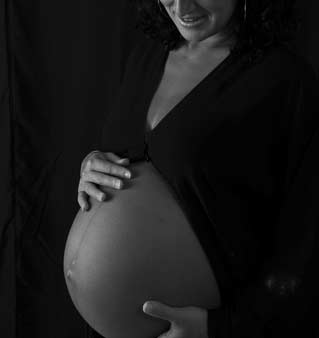Fewer Babies Born During Recession

The recession has brought about an anti-baby boom of sorts, new research suggests.
Birth rates in the United States started to decline in 2008 after rising to their highest level in two decades, and the decrease appears to be linked to the recession, according to a Pew Research Center analysis of state fertility and economic data.
The largest change in birth rate was in Arizona, which declined more than 4 percent. Arizona also had the second largest decline in per capital income in 2007 of the 25 states, and the sixth largest change in housing prices. [See where your state fits in.]
The analysis is based on data from the 25 states — the only states for which final 2008 birth numbers are available (these states include about 54 percent of the nation's population of women of childbearing age). Since the timing and extent of the recent recession varies from state to state, looking at state-level indications allows for a more nuanced analysis of links with fertility than is possible at the national level, the researchers say.
The report, released this week, showed a strong association between the extent of fertility change in 2008 and key economic indicators including: changes in per capita income, housing prices, and the number of working-age people who are employed across the states.
Among the findings:
- In 20 of the 25 states, the number of births declined or leveled off in 2008 from the previous year.
- In 22 of these 25 states, the actual birth rate — the number of women of childbearing age who gave birth — declined or leveled off compared with the previous year.
- In total, there were 2.29 million births in these 25 states, compared with 2.33 million in 2007. (That's a difference of 40,000 births.)
- The combined birth rate for the 25 states was 68.8 births per 1,000 women ages 15 to 44 in 2008, compared with 69.9 in 2007, a decline of 1.6 percent.
- Florida had the biggest decline in per capita income and the fourth largest decline in birth rates among the 25 states. It also had the largest foreclosure rate among these states, at 2 percent.
- North Dakota was one of only five of the 25 states that saw a boost in its fertility rate in 2008. This state also had the largest growth in per capita income among the 25 states, and its 2007 foreclosure rate was the second lowest among the 25 states.
The researchers considered other factors, such as unemployment, that might have caused the dip. But while the analysis found a strong association between the magnitude of birth rate change from 2007-2008 and a state’s housing foreclosure rate in 2007, no correlation was found with change in state-level employment or unemployment rates.
Get the world’s most fascinating discoveries delivered straight to your inbox.
Nationally, birth rates have fluctuated within a modest range — about 65 to 70 births per 1,000 women of childbearing age — since the mid-1970s. Over the past decade, birth rate trends roughly mirrored the nation’s economic ups and downs.
Birth rates dipped slightly in 2001 and 2002 during the dot-com bust, began to rise again in 2003, and peaked in 2007. The birth rate in 2007 was the highest in two decades. The rate declined modestly in 2008 and continued its decline during the first six months of 2009, according to provisional data from the National Center for Health Statistics (NCHS).
However, the economic cycle generally is thought to be only one of a number of forces influencing the fertility rate, the researchers say. Other factors that could play a role as well include: attitudes toward working women, the relative rise in women's wages compared with men's wages, and the availability of contraception, especially the growing use of the birth control pill in the 1960s.



